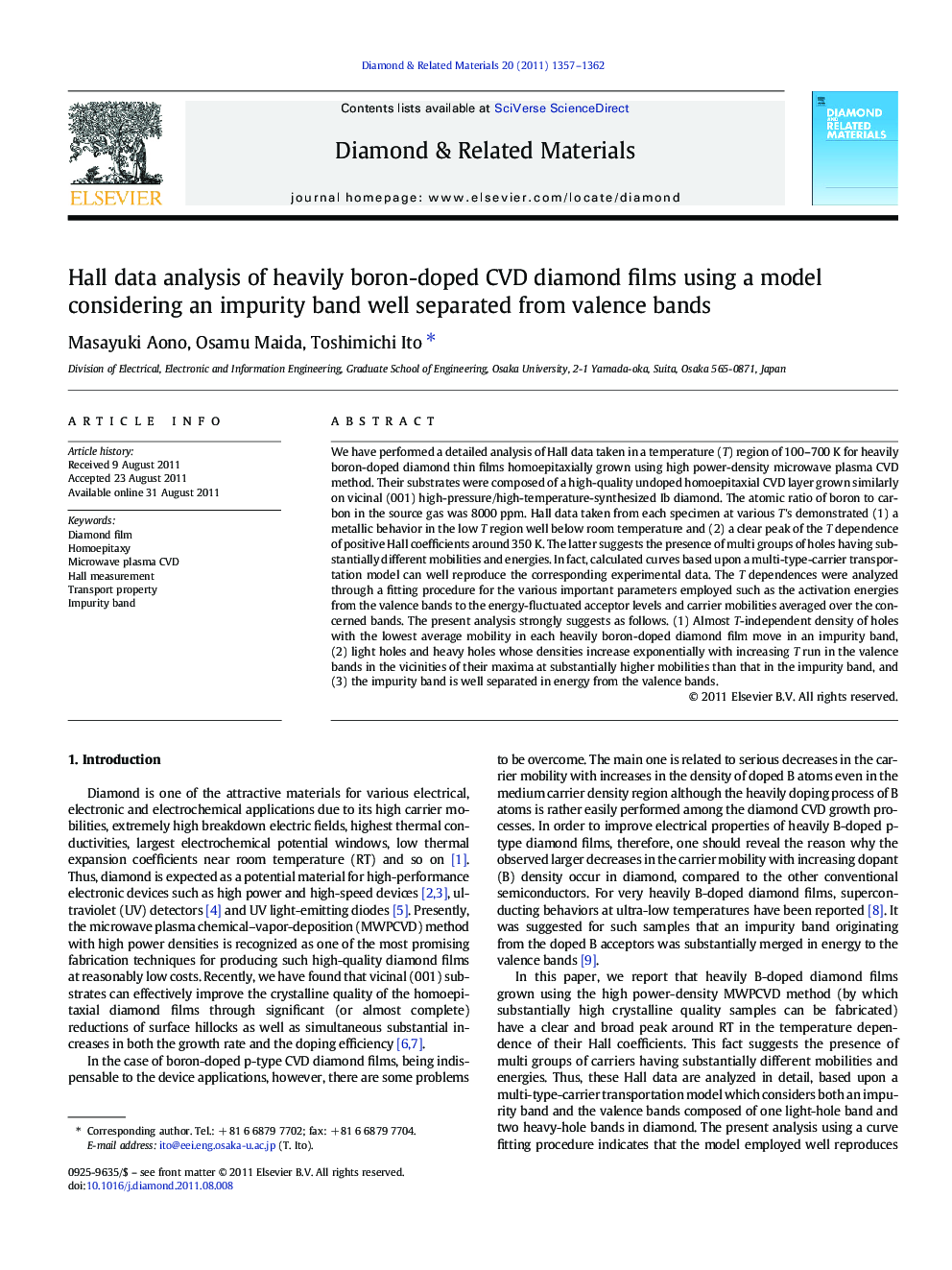| Article ID | Journal | Published Year | Pages | File Type |
|---|---|---|---|---|
| 702358 | Diamond and Related Materials | 2011 | 6 Pages |
We have performed a detailed analysis of Hall data taken in a temperature (T) region of 100–700 K for heavily boron-doped diamond thin films homoepitaxially grown using high power-density microwave plasma CVD method. Their substrates were composed of a high-quality undoped homoepitaxial CVD layer grown similarly on vicinal (001) high-pressure/high-temperature-synthesized Ib diamond. The atomic ratio of boron to carbon in the source gas was 8000 ppm. Hall data taken from each specimen at various T's demonstrated (1) a metallic behavior in the low T region well below room temperature and (2) a clear peak of the T dependence of positive Hall coefficients around 350 K. The latter suggests the presence of multi groups of holes having substantially different mobilities and energies. In fact, calculated curves based upon a multi-type-carrier transportation model can well reproduce the corresponding experimental data. The T dependences were analyzed through a fitting procedure for the various important parameters employed such as the activation energies from the valence bands to the energy-fluctuated acceptor levels and carrier mobilities averaged over the concerned bands. The present analysis strongly suggests as follows. (1) Almost T-independent density of holes with the lowest average mobility in each heavily boron-doped diamond film move in an impurity band, (2) light holes and heavy holes whose densities increase exponentially with increasing T run in the valence bands in the vicinities of their maxima at substantially higher mobilities than that in the impurity band, and (3) the impurity band is well separated in energy from the valence bands.
► Hall data have been analyzed for high-quality heavily B-doped CVD diamond thin films. ► We found metallic behavior below ≈ 200K and clear peak of Hall coefficients at ≈ 350K. ► These observed features were successfully explained with a multi-type carrier model. ► We found degenerate holes in an impurity band well separated from the valence bands.
